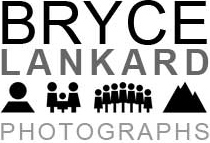
Zoe, Vazquez Rocks #9, CA 2002
“The Illuminated Shadow”
This body of work explores how light and shadow affect line, form, scale and texture. In an age of digital manipulation, I remain drawn to the ways in which film can be manipulated organically. In these images I employ the female form as a vehicle for identifying the contrasts, parallels and dynamic opposition created by that sense of contraposto seen in the human figure. This series of explorations is set against a tableau of images and shapes from both the natural world and the industrial.
The images in this series were created using Polaroid films, types 55 and 665. The inherent properties of these two very unique films allow for some wonderful adventures into the plastic nature of film and flesh. Processed conventionally, the polaroid film’s grain pattern gives skin a smooth, creamy feel. Through the use of a technique called the “Sabattier effect”, where a negative is solarized, the shadow areas are reversed and edges delineated. Further distress occurs by allowing the fresh, soft, wet negative to interact with elements on a location such as sand, rust, leaves, and finally by wetscanning the negatives and capturing the resulting air bubbles and the natural tones that occur even in black and white film. All images in “The Iluminated Shadow” series are printed using archival Ultrachrome inks, in signed editions of 12, with 2 artist’s proofs.

Zoe, Vazquez Rocks #2, CA 2002

Shadows and Fog. Tori, Woodstock, NY 2002
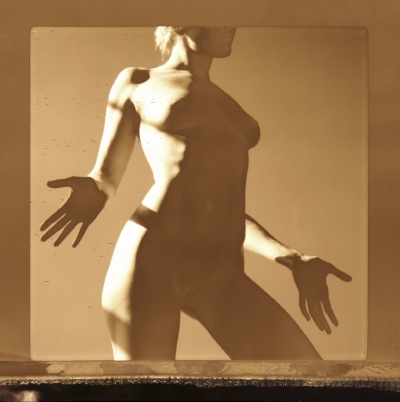
Cyd in Studio #7, NOLA 2002
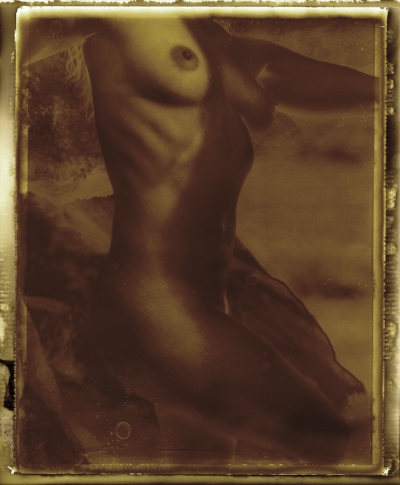
Zoe, Vazquez Rocks #10, CA 2002

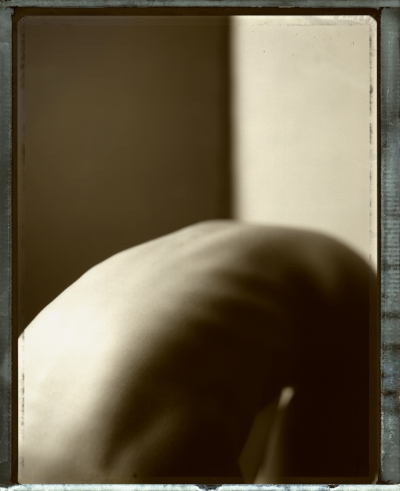
Tori in studio #12 , Rochester, NY 2002

Melancholic #11, Durham, NC 2015

Sam #6, Lake Mead, NV 2003

Zoe, Vazquez Rocks #4, CA 2002

Tori in studio #1 , Rochester, NY 2002

Tori at lime cave #1, Woodstock, NY 2002

Zoe. Sugar Mill, NOLA 1998

Zoe, dowtown LA #1, Los Angeles, CA 2003

Zoe, Vazquez Rocks #3, CA 2002

Zoe at backbone trail #4, CA 2002

Sasha #6, Red Rocks Canyon, NV 2004

Gael breathing fire #3, LIncoln Beach, New Orleans, LA 2000
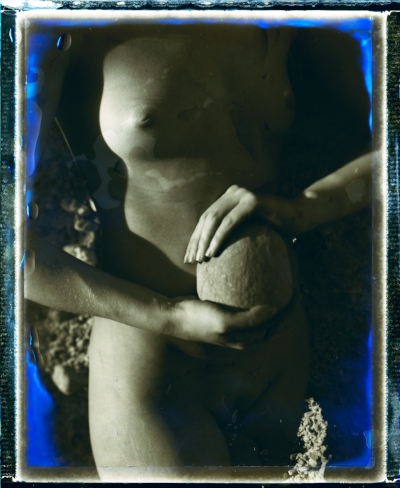
Sam with rock, Lake Mead, NV 2003

Tori, gesture #7, Woodstock, NY 2002
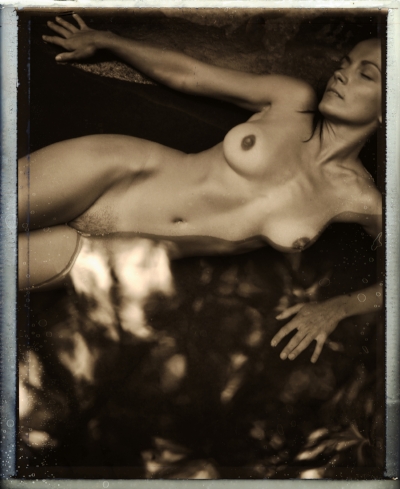
Tori in River #1, Woodstock, NY 2002

Zoe on a fuzzy chair #2, Los Angeles, CA 2003

Gael torso #1, LIncoln Beach, New Orleans, LA 2000

Gael #1, LIncoln Beach, New Orleans, LA 2000

Melancholic #1, Durham, NC 2015

Erica in studio #1, New Orleans, LA 1994

Tori in studio #4 , Rochester, NY 2002

Catherine Delish at Pussycat Cavern, NOLA 1998

Zoe as Moth, New Orleans, LA 1998

Tori, gesture #3, Woodstock, NY 2002

Cyd in Studio #1, NOLA 2002
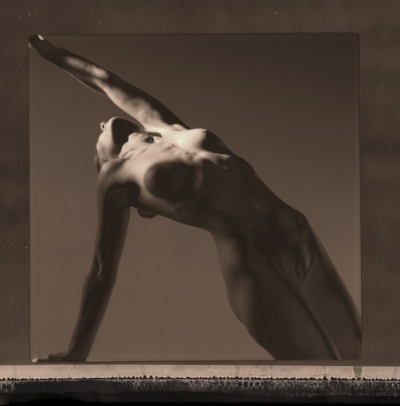
Cyd in Studio #5, NOLA 2002
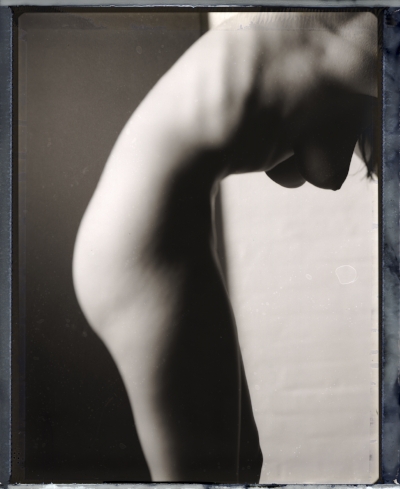
Tori in studio #2 , Rochester, NY 2002
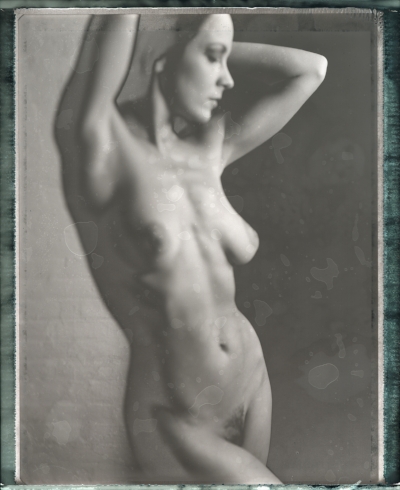
Tori in studio #3 , Rochester, NY 2002

Zoe on a throne, Los Angeles, CA 2003

Tori in studio #9 , Rochester, NY 2002

Cyd in Studio #3, NOLA 2002

Bodies: Skin and Steel. DOMA Gallery, Charlotte, NC 2010
Gabrielle Larew, owner and director of DOMA Gallery curated an exhibition of the work of Daniel Stern on vintage automobiles and my work from The Illuminated Shadow for a unique statement on line and form and sensuality.
Note: This folio contains more images from The Illuminated Shadow than were included in the exhibition.
Click here for a video of the opening reception for Bodies: Skin and Steel.

Review for Bodies: Skin and Steel at DOMA Gallery, Charlotte, NC 2010
BODIES OF WORK, Uptown Magazine
Photographing models with vintage Speed Graphic cameras using Polaroid positive-negative film, and manipulating the images on location, Lankard brings an artist’s touch to every stage of the process. He frames their bodies in layers of visual texture by solarizing the negatives – or prematurely exposing them to light during developing – scratching them and, back home, leaving air bubbles in the wet-scanning process.
Man Ray, the American-born artist who pushed lots of boundaries himself, photographed some of his nudes using solarization, but Lankard’s work adds different dimensions. His careful experiments produce an arresting tableau of sepia-like tone, timeless place and dreamy mood, as though the viewer were peering into the past, present and future all at once, a female figure the one constant.
Shadows are brought into light, lines unnaturally defined and parts of the women’s faces and bodies looking like negative images. In another twist of convention, Lankard often caught his subjects in dynamic tension rather than reclining, giving the shots a sense of motion.
Hannah Mitchell
BODIES OF WORK, Uptown Magazine, February 2010

meinberlin.de: Aktgalerie
translated poorly from German:
Art gallery
Analog-digital fusion
ny 2001
Bryce Lankard age of the photography unites. It works itself out together with old and establishing techniques textures between light and shade at female bodies. Family albums were its first source of inspiration. "Light of enables one to make a photograph. It of shapes and of gives dimension to visible objects. Light itself is occasionally described as beautiful. Woe be to the neglected shadow." (from the preface to "The Illuminated Shadow") Bryce Lankard is particularly interested in light and shade. A woman, who stands at the window, throws Myriaden at forms and textures, which can on their skin their own universe form and in each motion dynamically change. In "The Illuminated Shadow" discovers and lights up the US American this topic and deepens into the "neglected shade." family albums as the first source of inspiration Szenari basis camps for Lankards photographic discovery journeys form fissured mountains or trees with confused branches which are away in all directions, which look like Fraktale in a chaotic world. Similarly energizing regard he in addition, rusting sheet metal in an old factory or the intimate at home an apparently unknown neighbour, who lives behind half tightened curtains. Bryce Lankard was born 1963 in California China Lake and buildup in North Carolina. With the photography it began at the age of approximately twelve years, when it took an old Kodak 110 instamatic to camera to the hand. Inspired of photographs in the family album and super 8-Filmen of parents Bryce began to aeugen even by the objective. Pictures of its family and his friends fascinated him thereby as singular documents, those remained nearly unaffected by the influence the time. 1982 began Bryce Lankard a photographic study at the University of North Carolina in Chapel Hill. Here it could follow to its passion both documentarily and and art form. Lankards way into the act photography was however still long, full experiments and oriented themselves first more on Portraets. For approximately ten years he works act-photographically and feels only its recent work than pictures with own voice.
The Illuminated Shadow
The pictures of the series of "The Illuminated Shadow" were taken up with Polaroid films of the types 55 and 665. The characteristic Colorit of these two films was particularly important to it thereby since it helps to also produce the plasticity the female form somewhere as an adventure between light and shade. Lankard used a set of exposure techniques for its silber-halogenide filmmaterial. With conventional technology the Polaroid material gives rather a smooth and cremiges sample to the skin. In other pictures Lankard used the Sabattier effect (pseudo pseudo-Solarisation). An already anentwickeltes negative is vaguely after-exposed, which lets the clay/tone values partly tilt and particularly with color films to strong colors leads, which mix impressively from the negative and the positive. Some pictures, which were exposed even on the spot and worked on the Shootings, are to be identified hardly still as photos in the traditional sense. 1987 pulled Bryce Lankard after new Orleans. He is joint founder of the "Tribe of magazines", a Lifestyle magazine for music, mode and Nightclubbing with an active on-line Community. Its photos became contributions for a set of international technical periodicals: Also with it are The New York Times of magazines, Rolling Stone, spin, Forbes, time, Newsweek and The Village Voice. Bryce Lankard penetrated with exhibitions and prices also until Europe. Since it lives 1997 in New York and a part of its work into the "America Observed"-show in the 92nd Street integrated. In the last years he dedicates himself particularly to the combination of old similar and digital techniques of the last decade approximately around Photoshop. (text of Henning Onken - pictures of Bryce Lankard)
Zoe, Vazquez Rocks #9, CA 2002
“The Illuminated Shadow”
This body of work explores how light and shadow affect line, form, scale and texture. In an age of digital manipulation, I remain drawn to the ways in which film can be manipulated organically. In these images I employ the female form as a vehicle for identifying the contrasts, parallels and dynamic opposition created by that sense of contraposto seen in the human figure. This series of explorations is set against a tableau of images and shapes from both the natural world and the industrial.
The images in this series were created using Polaroid films, types 55 and 665. The inherent properties of these two very unique films allow for some wonderful adventures into the plastic nature of film and flesh. Processed conventionally, the polaroid film’s grain pattern gives skin a smooth, creamy feel. Through the use of a technique called the “Sabattier effect”, where a negative is solarized, the shadow areas are reversed and edges delineated. Further distress occurs by allowing the fresh, soft, wet negative to interact with elements on a location such as sand, rust, leaves, and finally by wetscanning the negatives and capturing the resulting air bubbles and the natural tones that occur even in black and white film. All images in “The Iluminated Shadow” series are printed using archival Ultrachrome inks, in signed editions of 12, with 2 artist’s proofs.
Zoe, Vazquez Rocks #2, CA 2002
Shadows and Fog. Tori, Woodstock, NY 2002
Cyd in Studio #7, NOLA 2002
Zoe, Vazquez Rocks #10, CA 2002
Tori in studio #12 , Rochester, NY 2002
Melancholic #11, Durham, NC 2015
Sam #6, Lake Mead, NV 2003
Zoe, Vazquez Rocks #4, CA 2002
Tori in studio #1 , Rochester, NY 2002
Tori at lime cave #1, Woodstock, NY 2002
Zoe. Sugar Mill, NOLA 1998
Zoe, dowtown LA #1, Los Angeles, CA 2003
Zoe, Vazquez Rocks #3, CA 2002
Zoe at backbone trail #4, CA 2002
Sasha #6, Red Rocks Canyon, NV 2004
Gael breathing fire #3, LIncoln Beach, New Orleans, LA 2000
Sam with rock, Lake Mead, NV 2003
Tori, gesture #7, Woodstock, NY 2002
Tori in River #1, Woodstock, NY 2002
Zoe on a fuzzy chair #2, Los Angeles, CA 2003
Gael torso #1, LIncoln Beach, New Orleans, LA 2000
Gael #1, LIncoln Beach, New Orleans, LA 2000
Melancholic #1, Durham, NC 2015
Erica in studio #1, New Orleans, LA 1994
Tori in studio #4 , Rochester, NY 2002
Catherine Delish at Pussycat Cavern, NOLA 1998
Zoe as Moth, New Orleans, LA 1998
Tori, gesture #3, Woodstock, NY 2002
Cyd in Studio #1, NOLA 2002
Cyd in Studio #5, NOLA 2002
Tori in studio #2 , Rochester, NY 2002
Tori in studio #3 , Rochester, NY 2002
Zoe on a throne, Los Angeles, CA 2003
Tori in studio #9 , Rochester, NY 2002
Cyd in Studio #3, NOLA 2002
Bodies: Skin and Steel. DOMA Gallery, Charlotte, NC 2010
Gabrielle Larew, owner and director of DOMA Gallery curated an exhibition of the work of Daniel Stern on vintage automobiles and my work from The Illuminated Shadow for a unique statement on line and form and sensuality.
Note: This folio contains more images from The Illuminated Shadow than were included in the exhibition.
Click here for a video of the opening reception for Bodies: Skin and Steel.
Review for Bodies: Skin and Steel at DOMA Gallery, Charlotte, NC 2010
BODIES OF WORK, Uptown Magazine
Photographing models with vintage Speed Graphic cameras using Polaroid positive-negative film, and manipulating the images on location, Lankard brings an artist’s touch to every stage of the process. He frames their bodies in layers of visual texture by solarizing the negatives – or prematurely exposing them to light during developing – scratching them and, back home, leaving air bubbles in the wet-scanning process.
Man Ray, the American-born artist who pushed lots of boundaries himself, photographed some of his nudes using solarization, but Lankard’s work adds different dimensions. His careful experiments produce an arresting tableau of sepia-like tone, timeless place and dreamy mood, as though the viewer were peering into the past, present and future all at once, a female figure the one constant.
Shadows are brought into light, lines unnaturally defined and parts of the women’s faces and bodies looking like negative images. In another twist of convention, Lankard often caught his subjects in dynamic tension rather than reclining, giving the shots a sense of motion.
Hannah Mitchell
BODIES OF WORK, Uptown Magazine, February 2010
meinberlin.de: Aktgalerie
translated poorly from German:
Art gallery
Analog-digital fusion
ny 2001
Bryce Lankard age of the photography unites. It works itself out together with old and establishing techniques textures between light and shade at female bodies. Family albums were its first source of inspiration. "Light of enables one to make a photograph. It of shapes and of gives dimension to visible objects. Light itself is occasionally described as beautiful. Woe be to the neglected shadow." (from the preface to "The Illuminated Shadow") Bryce Lankard is particularly interested in light and shade. A woman, who stands at the window, throws Myriaden at forms and textures, which can on their skin their own universe form and in each motion dynamically change. In "The Illuminated Shadow" discovers and lights up the US American this topic and deepens into the "neglected shade." family albums as the first source of inspiration Szenari basis camps for Lankards photographic discovery journeys form fissured mountains or trees with confused branches which are away in all directions, which look like Fraktale in a chaotic world. Similarly energizing regard he in addition, rusting sheet metal in an old factory or the intimate at home an apparently unknown neighbour, who lives behind half tightened curtains. Bryce Lankard was born 1963 in California China Lake and buildup in North Carolina. With the photography it began at the age of approximately twelve years, when it took an old Kodak 110 instamatic to camera to the hand. Inspired of photographs in the family album and super 8-Filmen of parents Bryce began to aeugen even by the objective. Pictures of its family and his friends fascinated him thereby as singular documents, those remained nearly unaffected by the influence the time. 1982 began Bryce Lankard a photographic study at the University of North Carolina in Chapel Hill. Here it could follow to its passion both documentarily and and art form. Lankards way into the act photography was however still long, full experiments and oriented themselves first more on Portraets. For approximately ten years he works act-photographically and feels only its recent work than pictures with own voice.
The Illuminated Shadow
The pictures of the series of "The Illuminated Shadow" were taken up with Polaroid films of the types 55 and 665. The characteristic Colorit of these two films was particularly important to it thereby since it helps to also produce the plasticity the female form somewhere as an adventure between light and shade. Lankard used a set of exposure techniques for its silber-halogenide filmmaterial. With conventional technology the Polaroid material gives rather a smooth and cremiges sample to the skin. In other pictures Lankard used the Sabattier effect (pseudo pseudo-Solarisation). An already anentwickeltes negative is vaguely after-exposed, which lets the clay/tone values partly tilt and particularly with color films to strong colors leads, which mix impressively from the negative and the positive. Some pictures, which were exposed even on the spot and worked on the Shootings, are to be identified hardly still as photos in the traditional sense. 1987 pulled Bryce Lankard after new Orleans. He is joint founder of the "Tribe of magazines", a Lifestyle magazine for music, mode and Nightclubbing with an active on-line Community. Its photos became contributions for a set of international technical periodicals: Also with it are The New York Times of magazines, Rolling Stone, spin, Forbes, time, Newsweek and The Village Voice. Bryce Lankard penetrated with exhibitions and prices also until Europe. Since it lives 1997 in New York and a part of its work into the "America Observed"-show in the 92nd Street integrated. In the last years he dedicates himself particularly to the combination of old similar and digital techniques of the last decade approximately around Photoshop. (text of Henning Onken - pictures of Bryce Lankard)








































